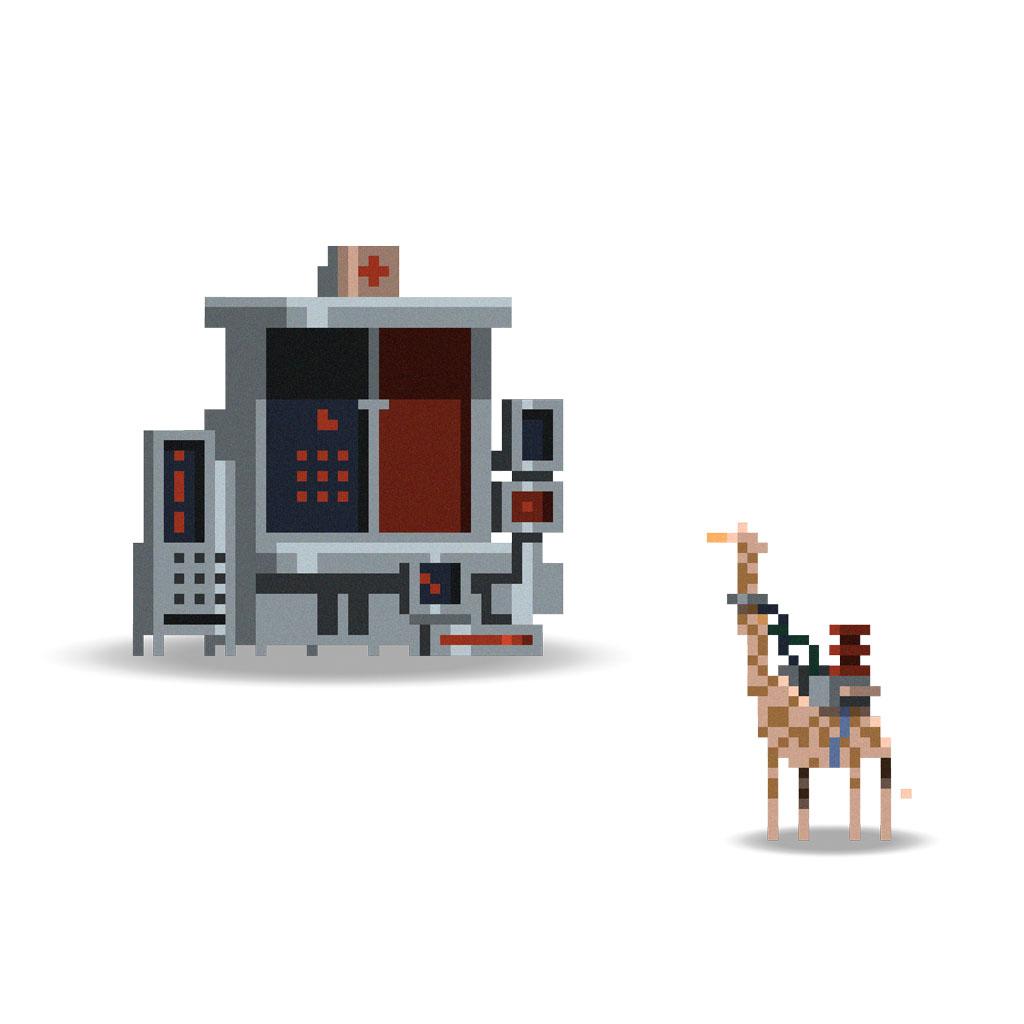Printed Mars

"Chop the bodies into pieces, explode a horse, steal balalaika from a bear on forgotten soviet spaceship. Hide from Omegacity headless robot, read thoughts of Gaylord and decode Golden Mars Bible"
Mars post-colony post-apocalyptic point-and-click quest. You waking up in a cold cave with no idea where and who you are, walking around and trying to figure out what happened by collecting clues and information from people's memories, solving puzzles and surviving. Game has 3 endings.
The story
Controlled by a tyrant, with the lack of water and humus, the colonists lives were very tough and challenging. They became very religious. They believed in things they were depending on. Like water, artifacts old civilization, ancient gods of mars, golden triangle and sacred source of water. After few generations they developed their own culture and wrote a mars bible in binary.
One day the tyrant loses contact with Earth 'cause of World War 3. He's realizing that there will be no more supplies from Earth and he's gonna lose power. There will be chaos. He's secretly replacing people with their printed spies. Bio Printer puts biochips in their heads. He can read their thoughts but can't control their minds.
Finally, source of water under Omegacity is getting dry. Chaos is covering the city and developing an apocalypse.
You're playing as a guy who was sent to suburbs to repair the biochip malfunction. You're waking up in a cold cave with no memory, walking around and trying to figure out what happened by collecting clues and information from people's memories, solving puzzles and surviving.








Graphics
I made a big research, playing last mobile games and, for the visual part, I decided to use post-pixel art. It's like classical pixel art but on modern hi-res displays. When you simulate the old screen distortion, use big square pixels mixed a bit with vector graphics. I used a lot of references to commodore 64 graphics and old 70's computer graphics.
I also decided to make a point and click, exploration game as a genre. And as a concept part I stopped on things like mars, 70s, minimalism, flat design.



Terminals
I really wanted to put old terminals into the game since the story is happening in 70's. I used some references from fallout, pirate hearts, i486 computers, commodore 64 software user interfaces, 70s-80s-90s sci-fi movies ui.
The terminal's look emphasizes the post-pixel art concept because it's all about the way you showing the screen. Distortion, tube screen, interlacing, rounded corners, noise, stretched pixels. I tried to keep everything as minimalistic as I could, so, I used 3-colors palette and 3x3 font.






Mars
The main story is happening on Mars so I just took real NASA mars photos as backgrounds. They are in a public domain and have a good quality. After combining them with pixel art and after a lot of post-processing, the picture became quite modern and original in the same time.



Development
All my life I wanted to make a video game. When i was 10 i used qbasic to make small games. Then, later, delphi, and even later, on the 1st course of university I wrote my own 3d engine on visual c++. Later flash, .net and xna. Then, few years ago I tried impactjs and other stuff. I tried a lot of engines before and at the moment stopped on unity. They just implemented 2d environment at the moment I started which was perfect for the game.



GUI
Last version has minimal ui with just one button in the corner of the screen which opens the inventory, and sometimes you're seeing a speech cloud just next to it. At first i tried other variants to put everything kinda inside the game environment but it didn't really work for mobile and after few of my friends tested it. So, I stopped on one-button solution.





Script Language
After I started to write more story and put more content I realised that there's pretty a lot of scenario going on. I didn't want to program everything in c#, so I wrote my own script language and a compiler for it. I could apply the scripts to the game objects and the characters. Tell them how to interact and how to behave. In the end, I didn't have to write too much code.
Post-Effects, Shaders
I played with a lot with unity shaders. Trying hundreds of them from the store, open-source resources and choosing the best looking. Later I dug into opengl and computer graphics much more while working on other projects on openframeworks and webgl. I read a lot of articles and books ( like superbible ) and finally ended up writing my own shaders with shadertoy and unity. In the game I used many of them. Like VHS distortion and humming, fisheye, film tonemapping and grain noise, tons of small noise, analog screen glitches and distortion emulations. I tried to make the picture more alive and dynamic by emulating old 70's oscilloscope screens for terminals and descent vhs distortion for the environment. It's actually were quite cool to put mirrors and space distortion shaders into 2d game.

Publicity
After I uploaded game to gamejolt I got a big feedback. The game was downloaded 12K+ times and I had a huge response from the players. I had to improve and fix a lot of things which weren't obvious or were confusing for them. Later, I presented the game on Berlin Game Scene event and A MAZE indie game festival open screens. I got a lot of experience by doing that. Now I definitely know my mistakes, things I have to improve and what I have to do next.

Promo





